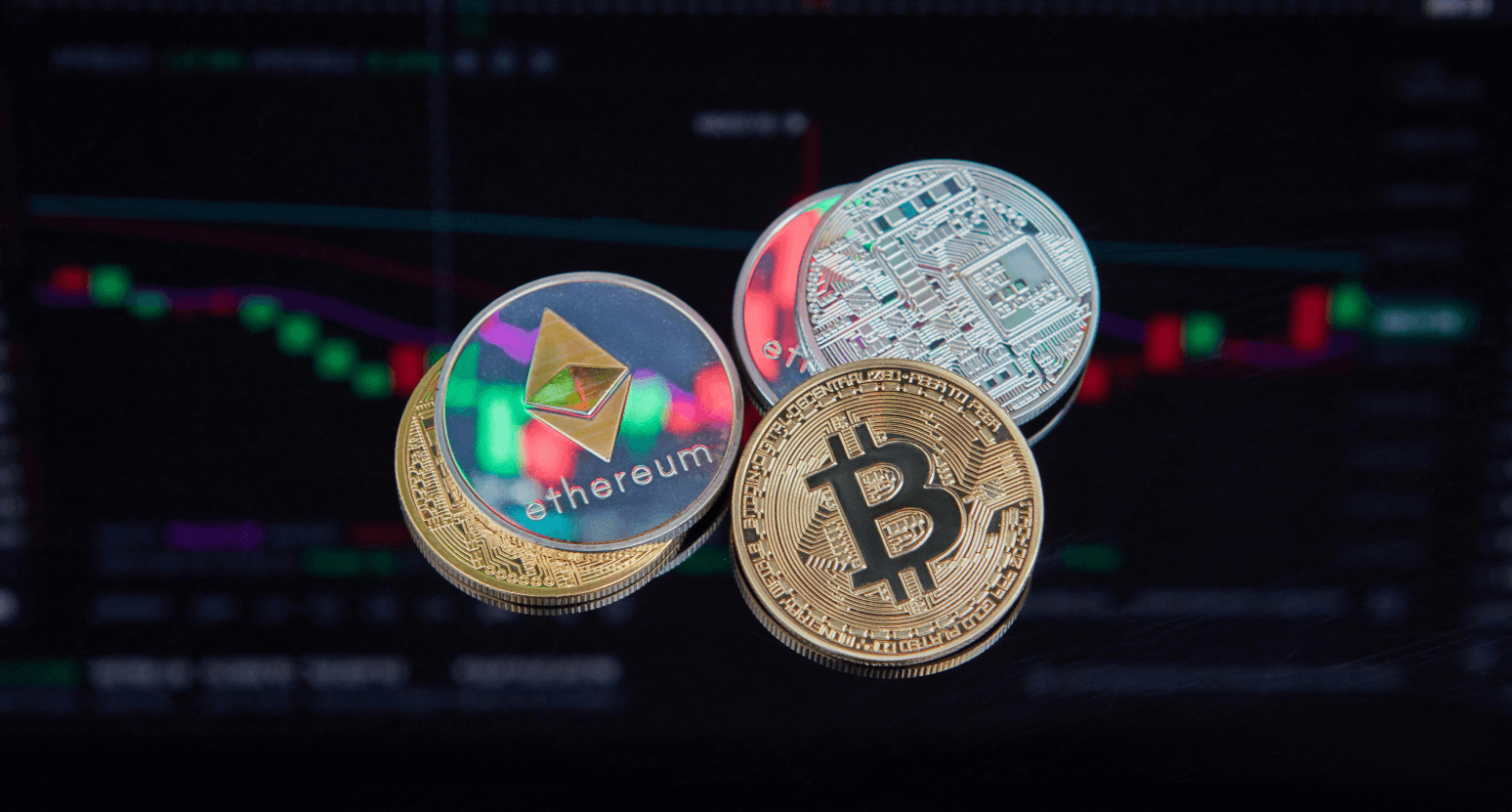
What Gives Cryptocurrency Value?
Apr 25, 2023
At Alkimi we are using a cryptocurrency called $ADS within our decentralised advertising exchange to reward users, reduce fees and access new features.
Cryptocurrencies are entirely digital and have no physical form, so explaining how they have ‘real’ value to someone can sometimes be tricky. Especially if the person you are talking to is waving cash in your face saying:
“This is real money, with real value. How can your crypto have any value, you can’t even hold it. It’s not backed by anything at all and therefore it’s all worthless! Hah”
This sort of argument is hard to refute because in many ways it is true. A cryptocurrency is not a physical object, you can’t hold it in your hands, and it is not backed by a government like the cash in your hand is. However, that does not mean that cryptocurrency is without value.
Let’s discover why.
Expect to learn:
What gives a currency value
What gives cryptocurrency value
How they are different from one another
Before we dive into what gives a cryptocurrency value, and how that value differs from fiat currency, it is important to lay the foundations of why any currency has value.
So…
What gives currency value?
1. Utility
We use currency because it is the most convenient way to transfer value between one another for goods and services.
Currency’s main utility is its ability to be easily exchanged, it is easier than trading shells or dividing gold, which are forms of currency that humans have used in the past.
Photo by Jp Valery on Unsplash
Ultimately we chose to use paper bank notes because of their ease of use.
The internet has also innovated how we use and transact currency with the invention of online banking and contactless (cloud) payments.
It is much easier to transact with one another by passing over bank notes, or by tapping your card than it is to divide a lump of gold or barter.
It might seem obvious, but it is an undeniable benefit. Utility is valuable.
2. Trust
The cash in your hand or the money in your bank account is not expensive to create. It doesn’t cost the British government £5 to produce a £5 banknote. What gives the banknote value is the trust that we put in it. We trust that we can exchange it for goods and services.
You, and I and millions of people around the world recognise that a £5 banknote has purchasing power. As a result of many people agreeing to its purchasing power, it is widely accepted and holds value.
The physical paper is almost worthless, but the trust between members of society that it is worth something is enough to give it value.
Here’s an excerpt from the website of the Bank of England, the people who produce the money, to further demonstrate this point:
From the Bank of England website: Why does money depend on trust? .
Photo by Etienne Martin on Unsplash
“The reason money works when you pay for things is because people trust in its value. Historically, you could exchange banknotes issued by us for gold. But the link between notes and gold was broken a long time ago, so nowadays it makes more sense to think of money as a kind of IOU (I owe you).”
“You can think of money as a special type of IOU: one that’s accepted by everyone.”
Trust is valuable.
3. Scarcity
We’ve all heard the saying “Money doesn’t grow on trees”, this saying alludes to the fact that money is hard to get but it also highlights an important point. A currency maintains its value because it is scarce.
Pic of money tree:
Photo by micheile henderson on Unsplash
Controlling the supply and demand of a government-issued ‘fiat’ currency like the GBP (£) is a balancing act. There are countless instances where a government has issued too much money and rendered it worthless. Zimbabwe and Venezuela are recent examples of this.
There must be enough currency in circulation to meet people’s expenditure needs but not so much that it significantly devalues the currency and causes the prices of goods to rise unsustainably fast. Scarcity is valuable.
Now that we have covered some of the fundamentals of why a currency has value, we can see how they apply to cryptocurrencies like Bitcoin.
What gives cryptocurrency value?
1. Utility
Cryptocurrencies are well prepared to facilitate the transactions of a global economy that continues on its trajectory towards digital payments. Like fiat currency, cryptocurrency is easily exchanged.
Photo by Kanchanara on Unsplash
You can set up a crypto wallet in a few minutes and begin accepting payments from anywhere in the world. The fees associated with transacting in cryptocurrencies stay the same whether it is a small or large amount. For businesses that operate in multiple jurisdictions and need to move money across country borders on a regular basis, this is very appealing as it can be more efficient to use crypto.
When used correctly, cryptocurrencies are a secure, 24/7 solution to global payments. However, that only scratches the surface! Utility is valuable.
2. Trust
Trust, or a lack of it, is perhaps one of the defining characteristics of cryptocurrency.
Let us explain…
A core ethos of cryptocurrency is removing the need to trust someone with your money. Satoshi Nakamoto, the pseudonymous founder(s) of Bitcoin, figured out how to do this with the help of blockchain technology.
Satoshi removed trust from the system by creating a peer-to-peer network that didn’t rely on trusted intermediaries such as banks to operate. By removing the intermediaries, otherwise known as the ‘3rd parties’, Satoshi created a trustless system that could not be controlled by a single authority.
A fiat currency relies on the trust of a government to maintain its purchasing power and validity, this makes it susceptible to a single point of failure. Cryptocurrencies such as Bitcoin are decentralised and therefore cannot be controlled, inflated or misused by any one authority. Trust is valuable.
3. Scarcity
There is a finite amount of cryptocurrency in circulation. Each cryptocurrency has its own set of economic rules, known as tokenomics, that dictate how much is created and over what time schedule. It is possible to change the tokenomics of a cryptocurrency if a community proposal is accepted by a large majority of the token holders.
In the case of the GBP (£), we rely on the Bank of England to control the supply and keep the value of the currency stable. As cryptocurrencies are decentralised they rely on good tokenomics.
Bitcoin token inflation schedule:
Bitcoin Tokenomics | CoinGecko
The tokenomics of Bitcoin are a classic example. It is almost certain that there will only ever be 21 million Bitcoin in circulation, and the last one will be created in the year 2140. Every 3 and a half years or so, the amount of Bitcoin that gets created with each new block is halved. This event is known as the ‘halvening’ and reduces the new supply of Bitcoin becoming available.
Less supply, with equal or rising demand, results in a higher price per Bitcoin. A positive tokenomic. Scarcity is valuable.
Let’s wrap this up
Utility, trust and scarcity are crucial to any form of currency whether it be physical, digital or cryptographic.
There are many similarities between fiat currency and cryptocurrency but the main point of difference is decentralisation.
Fiat currency is controlled by banks and governed by governments. Cryptocurrency is controlled by code and governed by its decentralised community of users.
Ultimately, a currency is worth what you are happy to exchange for it.
In the next episode of Blog-chain, we are going to dig a little deeper into the technology that underpins almost all cryptocurrencies. Click here for more.
If nothing else, remember this.
Key takeaways:
A currency system is the most convenient way to transfer value between one another at a scale
We trust central banks and governments to maintain the stability of fiat currencies
Cryptocurrency tokenomics cannot be changed without a large majority of community approval

Connecting crypto & blockchain
Learn about the integral relationship between blockchain technology and cryptocurrencies. This blog provides an...
Read now
What Is Cryptocurrency?
Discover the origins and true meaning of cryptocurrency in simple terms. Learn how cryptography enabled secure...
Read now
What is a Blockchain?
Understand blockchain technology with this beginner's guide. Learn what a blockchain is, how blocks and transactions...
Read now